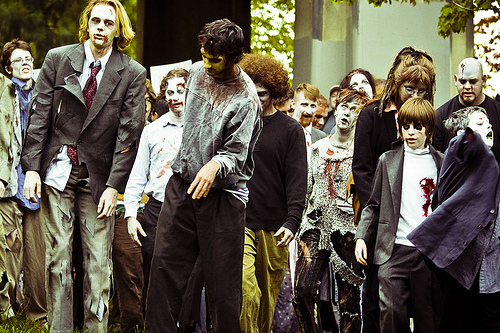Recently, I was asked, “Can you bring a dead community back to life?”
There was a t-shirt company that had built a massive community, but when the founders lost interest, the community slowly died off and went quiet. This person was asked to bring it back and asked for some ideas on how to go about doing that.
The short answer is, I don’t think it’s ever too late, because you can always just start at square one.
Bringing a dead community back to life isn’t so different from starting a community from scratch.
It will definitely be difficult to get the original members to just start being active again. They’ve moved on, and the community is no longer a part of their life. But, they may still be interested in whatever common ground brought them all together in the first place so don’t give up on them yet.
What you have at that point is a lot of potential community members, but no actual community.
You can start asking more questions and hope something clicks, but that might be like trying to create a river by pouring buckets of water in a dried out river bed.
What you really want to to do is replenish the heart of the company. Build a strong core that will sustain the community, and grow it out from that core.
So a better bet would be to focus on rebuilding relationships with individual people, the same way you would if you were starting a community from scratch.
Find the people who were once active and send them an email, maybe hop on the phone. Start introducing people to each other and build relationships behind the scenes.
As far as what to do about the platform that the community once thrived on, that’s hard to say. You might want to start from scratch and invite people to the new platform. Or you might be able to leverage the existing content to respark conversations.
It depends on what caused the community to die in the first place.
Was the platform no longer conducive to conversation? Did people just lose interest?
It sounded like in the case of the t-shirt company, the community was built around a business, and when the founders lost interest in the business, the community kind of deflated. It lost its core. In that case, I don’t think it’s the members or the platform that caused its demise. It was two things:
1. The community was still reliant on the community builder in order to continue to flow. When the builders lose interest in a community that isn’t yet self sustaining, no one will stick around. The community builder is the one that was so crazy and impassioned that they wanted to devote time to this idea that they could build an amazing, healthy community. They were the heart of the community… so you may need to find a new heart.
2. The community was built around a company instead of an interest. If the common interest was “design”, then as long as the people are there and conversation was flowing, there was no reason for it to stop talking about design when the founders lost interest. But because it was built around the company itself, without the company, there was no common bond and so people stopped participating.
So in order to build a self sustaining community, you’ll need to build a strong core around an interest that will live on for a long time. If Nike crashed and burned one day, the Nike community would be no more, but the running community will live on forever.
So go ahead and bring your community back from the dead. Or better yet, build one that will never die.
Photo cred: KellBailey
David Spinks, Co-Founder TheCommunityManager.com was a part of the TCM team from the site’s inception through 2014. He utilized TCM to create the first CMX conference in San Francisco in February 2014, and then ultimately severed ties with TCM and its co-founders.
TheCommunityManager.com, CMXSummit and LetsFeast.com. Lifelong student, community builder and writer.



Great insights! Your advice to create engagement around an interest vs. a brand is particularly useful, whether building a brand community from scratch or trying to pump life into a flatlined community. From experience, rebuilding a community takes time, patience, consistency, and more patience.Â
hiuhime Indeed.  There are no shortcuts for building community.  Would love to hear more about your experience bringing a community back to life.  Can you share more about it?
But really… I just wanted an excuse to post a big zombie picture in a blog post.
DavidSpinks Sure thing! I recently built up an art non-profit’s SM presence from basically zero. The non-profit is event-based, so it’s easy to generate a conversation around the event, it’s tougher to encourage consistent interaction and an authoritative voice. My goal is to use SM platforms and the non-profit’s blog to connect and promote a network of artists, musicians, and local businesses in the area (Dallas) who have a common thread of supporting the arts and doing social good.I’m also working on building a community around the digital strategy agency I work for.  It’s a new challenge for me to strategize community building for an agency, as compared to a non-profit or brand, thought leadership and agency culture being our voice. Any insights are much appreciated!